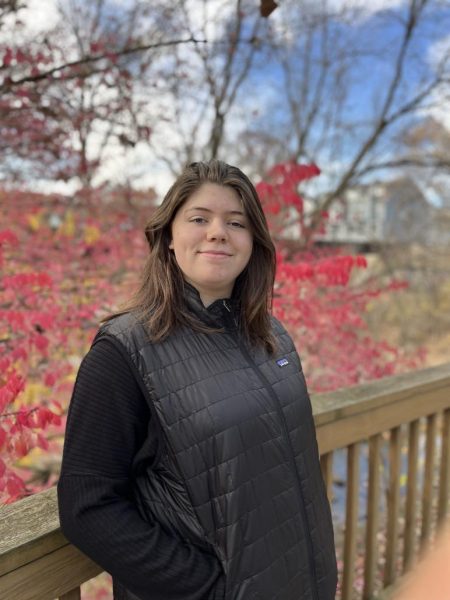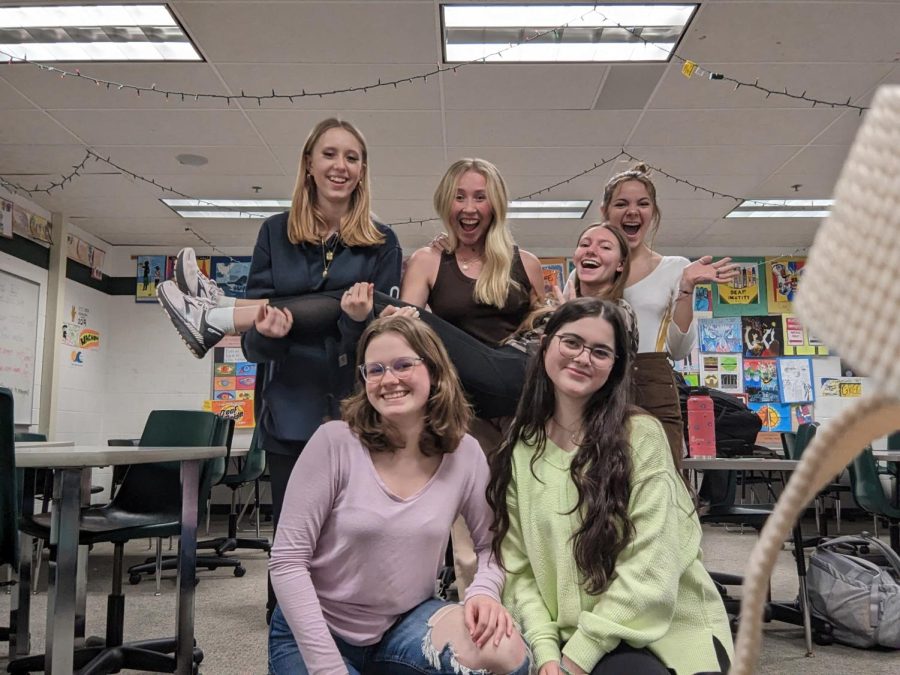ASL deaf-blind week gives students the opportunity to learn more about the community and develop their understanding of
For most teachers, assignments usually include some sequence of supplies such as a worn pencil, a notebook, and sometimes, a computer; however, for American Sign Language teacher Kimberly Anderson, all she needs for her students to bring to her unit on the deaf-blind is a willingness to learn, earmuffs, and blindfolds.
“We do a couple of days where we are signing to each other; that’s just ASL,” Anderson said, “but then, I teach [the students] four different methods to communicate with someone who is deaf-blind, and then they complete class activities where all 30 kids are deaf-blind, and I’m leading them on what they do those three days they are deaf-blind.”
The deaf-blind unit includes many different and difficult aspects that are meant to supply the students with experiences deaf-blind people run into daily. The students are separated into pairs with the two alternating between the days of the week so one is wearing a set of earmuffs and blindfolds while the other leads the partner toward the activities.
The earmuffs and blindfolds are meant to simulate the perspective of a deaf-blind person to the best of their abilities and eliminate the senses of sight and sound so students rely on their partner for help which is another aspect applied in the deaf-blind community.
The first day includes activities such as the team puzzle, guess the object, and building blocks where students are meant to identify, draw and complete the task without the use of sight or sound as well as only relying on the four deaf-blind communication techniques taught in the class, which does not include any talking or removing the headwear.
“Through the deaf-blind weeks,” Anderson said, “the students get a further experience of what it might be like to experience the loss of one’s senses.”
The second day follows the same pattern with activities ranging from leading the deaf-blind person around the school and up the stairs to getting dressed in the clothes assigned to them on a sheet.
While the third day heavily involved applying the other senses such as smell and feel, students were challenged to identify certain foods by smell and write the names of a student on the arm of a deaf-blind with pipe cleaners.
Sophomore Evelyn Roessler, a participant in the ASL deaf-blind week, had explained how crucial the unit was to her in understanding how deaf-blind people operated in their daily lives.
“I would have never known what it was like [to be deaf-blind] because not many people are going [to] go plug their ears and close their eyes,” Evelyn said. “But, doing it is very beneficial. You’re understanding what life is like for other people.”
The weeks following are spent absorbing materials such as listening to TED talks by deaf-blind people, discussing a famous icon of the community, Hellen Keller, and watching an Oscar-nominated film about a deaf-blind man.
The main premise behind a lot of the topics discussed in the classroom is the issues deaf-blind people face with finding help and communicating.
These sessions serve to show a grim reflection of the reality deaf-blind people face every day when they go outside and how they are so disconnected from the society around them even if that is not their fault.
“I talked to the kids about it, and I said, ‘How long would someone have to wait to be helped?’” Anderson said. “We don’t know how long this man waited, but it appears to be a long time.”
That’s the main purpose and drive behind the deaf-blind unit and the ASL classroom, especially its lovely teacher who works hard to help create an environment where kids can learn more about the situation with deafness, blindness, and deaf-blind communities.
They wish to create a society where its disabled minority members are not excluded because they cannot communicate how the majority of the population does, and that sentiment is shared by all the students, including sophomore Coco Mehney.
“There are so many places, like restaurants or random public places, where you’ll see a deaf-blind person that’s struggling and might need help, but you have no way of communicating with them,” Coco said. “I just feel like everybody needs to look outside their own bubble and learn about other communities and cultures.”
The struggle for connection between a non-hearing person and a hearing one who doesn’t know sign language can affect how people communicate as a society. The involvement of students in the deaf-blind weeks should set an admirable example for the whole school on the modern-day advancement for communication in inclusion and expansion that students should aspire to create.
Overall, ASL deaf-blind week gives the students the ability and opportunity to learn how to communicate with those unable to do so normally in hopes of spreading that thinking amongst its students, whether in the classroom or not.
“I share with them that they could be that person,” Anderson said. “They could be the one that goes and helps this person that’s been waiting for someone to connect with and how they could change their life if they learned to communicate.”

Ava is a senior entering her second year writing for the Central Trend. She strives to be a passionate writer, hopelessly curious about all topics, and...



























































































